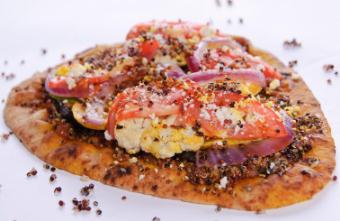Incorporating International Breads in the Culinary Classroom
31 January 2011By Birch DeVault, M.Ed.
 Though baking comes with its own rigors and rules, learning international breads expands students’ repertoire and deepens the learning experience.
Though baking comes with its own rigors and rules, learning international breads expands students’ repertoire and deepens the learning experience.
Baking and pastry, for many culinary students, can be either an exciting challenge or a daunting endeavor. In many ways, the very cognitive underpinning of baking and pastry arts is completely different from that of culinary arts. Working baking and pastry recipes into culinary classrooms can ease some trepidation students have toward the discipline.
Culinary preparations, for the most part, incorporate a little give that makes recipes more like guidelines than directives. Cooking needs to be flexible to respond to the conditions in which it is accomplished, the mood or pressure of the market and the whim or desire of the professional. Standardized recipes are certainly necessary in successful foodservice operations, but most recipes offer room for experimentation that can engage and inspire students as well as chefs. If an educator wishes to engage students in the pursuit of baking principles within a culinary classroom, the realm of international breads is a worthy one.
Moving from the Far East westward, a great place for an exploration of bread to start is India. Naan, the yeast-leavened, tandoor-baked flatbread, is truly dynamic and flexible. The first time students mix the ingredients for naan, and then observe its doubling in size over two rises, can be eye-opening and rewarding to all involved. The softness of the dough and its forgiving elasticity make it fun to work with and delicious to consume. Without having a tandoor available, the instructor can direct students to cook the naan on a flattop, grill or in the oven. Sisters to naan, roti and chapatti, are also contenders for inclusion on a culinary menu. These two unleavened breads offer a different take on the flatbread idea, reminiscent of the tortilla, yet strikingly different in texture and application. Add a cucumber and yogurt raita or a flavorful chutney, and the experience of baking bread for culinary students can be revolutionary.
Moving west, and very similar to naan, one encounters the pita. This yeast-raised dough can be paired with Lebanese, Israeli, Turkish or Greek cuisine to great effect. Students engage in a decision-making process as to how one actually cooks the bread and can compare and evaluate the merits of all. Pita on a griddle or flattop, from an open grill or out of the oven recreates an authentic experience and provides a springboard for discussions about heat transfer and the division application of cooking space. Paired with other starches such as tabbouleh and couscous, the culinary kitchen becomes a crossroads of Middle Eastern cuisine.
Finally, the qualities of the pizza for this generation of student chefs cannot be understated. A far cry from take-out, housemade pizza is attractive and engaging for many in the classroom. Just the thought that one can recreate pizza in a culinary classroom opens many students’ eyes to the possibilities and accessibility of baking arts. Pizza can be elevated to an art form by certain practitioners, but at the novice level is forgiving and flexible.
We must make our students comfortable in their learning environment if we wish them to grow as craftspeople and artists. Though baking and pastry comes with its own rigors and rules, it can be a challenging and welcome addition to the culinary classroom. The rise of baking in popular opinion aside, including international breads in the culinary classroom expands the students’ repertoire and will deepen the learning experience.
Birch DeVault, M.Ed., is department chair of the College of Culinary Arts at Johnson & Wales University in Denver.
Photo: Indian naan and pizza are good beginning international breads for culinary-arts students. This Grilled Vegetable, Red-Onion Curry & Quinoa Pizza combines both applications. Courtesy of Indian Harvest/Rob Yuretich.
